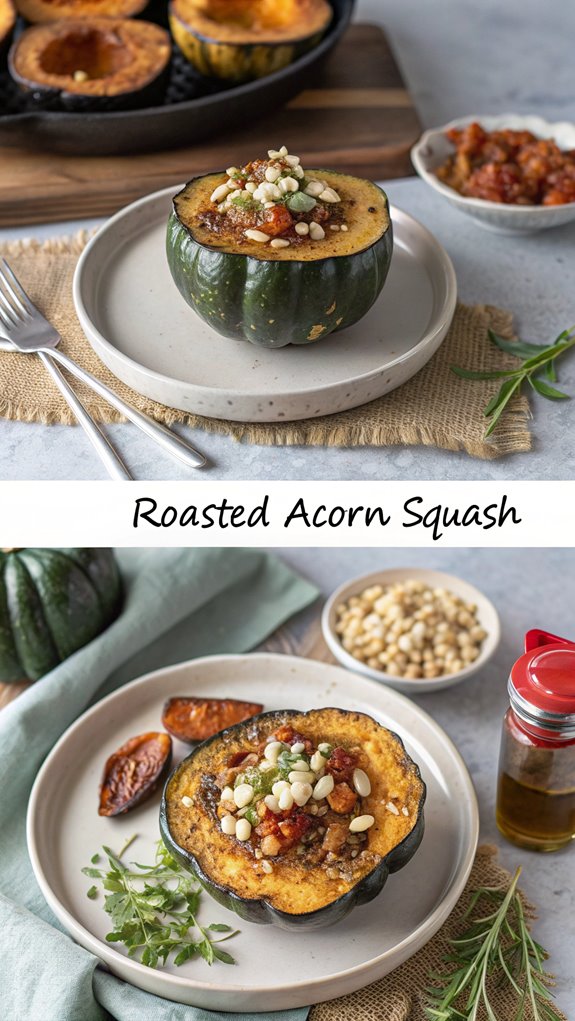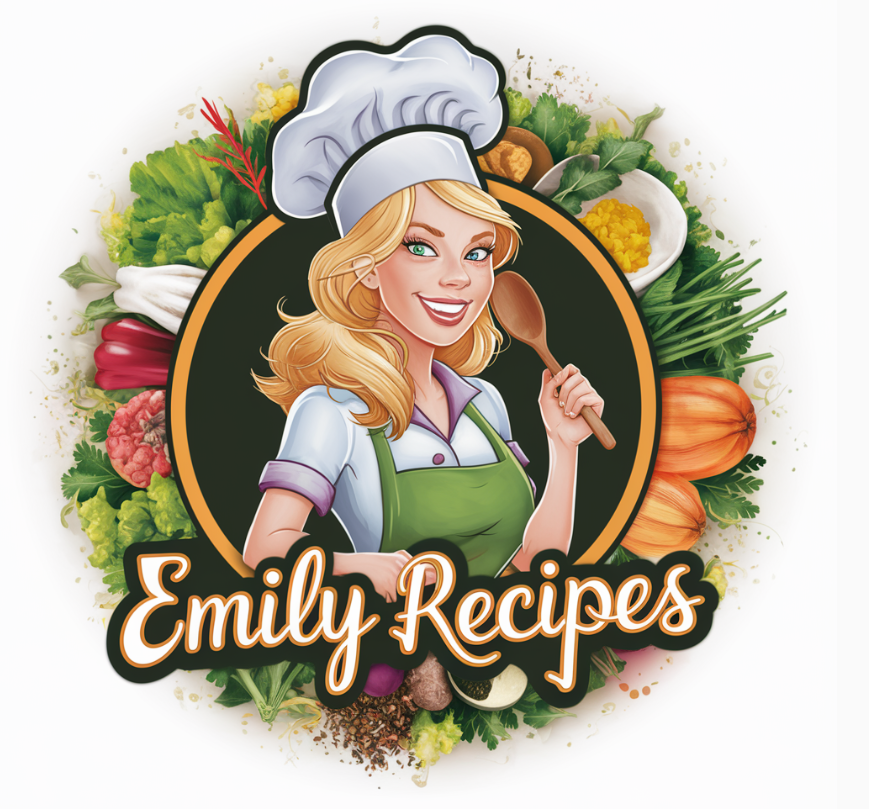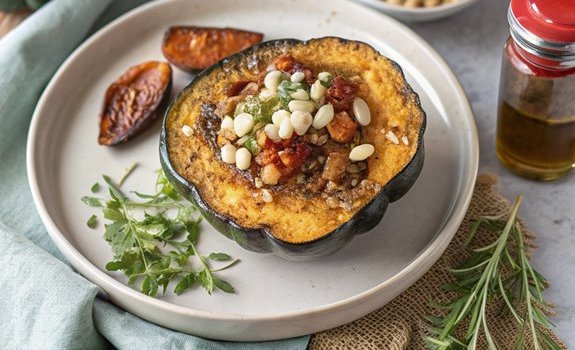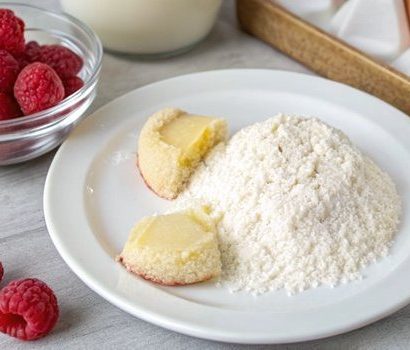Thanksgiving Sides Dishes
When you think about Thanksgiving, the focus often shifts to the turkey, but the side dishes can truly make or break the meal. You’ve got your classics, like creamy mashed potatoes and savory stuffing, but have you considered how innovative twists can elevate these staples? From health-conscious options to creative presentations, the variety is endless and reflects both tradition and modern tastes. What’s even more intriguing is how these sides can spark conversations and memories around the table. Let’s explore some unexpected choices that might just redefine your Thanksgiving experience.
Why You’ll Love This Recipe
You’ll love this recipe because it combines delicious flavors with health benefits that make your Thanksgiving feast even more enjoyable.
By incorporating fermented vegetables and probiotics, you’ll support your gut health, which is especially helpful when indulging in rich foods. High-fiber vegetables like Brussels sprouts, carrots, and sweet potatoes not only help with digestion but also keep you feeling full longer. Including options like Limited Edition Thanksgiving Sauerkraut enhances the meal experience by adding flavor and digestive enzymes.
Opting for vegetable-based sides, such as collard greens and green beans, provides lower-calorie options that won’t weigh you down. Adding proteins like nuts can elevate the nutritional value of your sides, ensuring you receive a balanced meal.
You can also balance out heavier dishes with ingredients like sauerkraut and fermented pickles, creating a more satisfying experience.
Popular choices for your Thanksgiving table include green bean casserole, cranberry sauce, and sweet potato casserole, but don’t shy away from regional favorites or unique options like Ramen noodle salad.
History
Thanksgiving side dishes have evolved considerably over the centuries, reflecting changes in culture, availability of ingredients, and culinary practices.
In the early days, from 1621 to the 1700s, Native Americans influenced the menu with venison, wildfowl, and corn, along with vegetables like squash and beans. The colonists incorporated pumpkin into their dishes, creating custards and pies, while game and domesticated poultry began to appear.
By the 1800s, roast turkey became the centerpiece of the meal, with stuffing made from bread and herbs. Cranberry sauce emerged as a popular condiment, and the Industrial Revolution improved food preservation, making a wider variety of ingredients available. Southern stuffing often made with cornbread reflects how regional variations began to shape traditional Thanksgiving menus.
Thanksgiving was declared a national holiday in 1863, solidifying its place in American culture.
In the 1900s, canned foods like cranberry sauce and pre-frozen turkeys transformed meal preparation, allowing families to enjoy diverse flavors easily. This era also saw the invention of dishes like green bean casserole.
Today, Thanksgiving side dishes continue to reflect regional and ethnic influences, showcasing a rich tapestry of flavors and traditions that connect families and celebrate harvest abundance.
Recipe

Roasted Acorn Squash with Maple Syrup****
Roasted acorn squash is a delightful and festive side dish that brings warmth and sweetness to your Thanksgiving table. The natural flavors of the squash are enhanced by a drizzle of maple syrup, olive oil, and a medley of herbs, creating a perfect balance of savory and sweet. This dish not only looks beautiful when plated but also fills the air with an enticing aroma as it roasts in the oven. This simple yet impressive recipe allows the squash to caramelize beautifully, resulting in tender, flavorful pieces that are sure to be a favorite at your holiday gathering. Roasted root vegetables are a wonderful complement to this dish, adding even more seasonal variety to your meal.
Pair it with your main dish or serve it alongside other sides for a colorful and satisfying spread.
Ingredients:
– 2 medium acorn squashes
– 3 tablespoons olive oil
– 2 tablespoons maple syrup
– 1 teaspoon dried thyme
– 1 teaspoon dried rosemary
– Salt and pepper to taste
Cooking Instructions:
- Preheat your oven to 400°F (200°C). Line a baking sheet with parchment paper for easy cleanup.
- Cut the acorn squashes in half lengthwise and scoop out the seeds using a spoon. Place the squash halves cut-side up on the prepared baking sheet.
- In a small bowl, whisk together the olive oil, maple syrup, dried thyme, dried rosemary, salt, and pepper until well combined.
- Brush the mixture generously over the cut sides of the acorn squash, ensuring an even coating.
- Roast in the preheated oven for 25-30 minutes, or until the squash is tender and the edges are caramelized. You can check for doneness by piercing the flesh with a fork; it should be soft.
- Remove from the oven and let cool slightly before serving. You can garnish with fresh herbs for an extra touch if desired.
Extra Tips:
For a more caramelized flavor, consider roasting the squash at a slightly higher temperature (around 425°F) and keeping an eye on it to avoid burning.
You can also experiment with different herbs or add a sprinkle of cinnamon or nutmeg for a seasonal twist. If you have leftovers, roasted acorn squash can be stored in an airtight container in the refrigerator for up to three days, making it a great option for meal prep as well!
Final Thoughts
Reflecting on the significance of Thanksgiving side dishes reveals a rich tapestry of tradition, emotion, and cultural influences. These dishes often hold more importance for their connection to family rituals than for their taste. When you sit down to a meal, the familiar flavors can trigger powerful sense memories, reminding you of past gatherings and loved ones.
Historically, Thanksgiving meals have evolved, originally including proteins like duck and seafood. Over time, influences from various cultures shaped the side dishes we cherish today, such as sweet potatoes, which honor African-American and Southern traditions. Cheesy Creamed Kale, a delightful twist on classic spinach dip, showcases how we can innovate and elevate traditional flavors.
While traditional staples are common, remember that there’s a wide variety of options available. You can roast vegetables, create delightful salads, or experiment with different stuffing ingredients.
Planning is essential, too; think about the flavor theme of your celebration and how your side dishes will complement the main course.
Using simple techniques can save you time and effort, allowing you to enjoy the day. By considering these factors, you can create a Thanksgiving feast that pays homage to tradition while embracing the diversity of flavors available.
Enjoy crafting your side dishes, knowing they play a crucial role in the celebration.
FAQ
When planning your Thanksgiving side dishes, you might’ve a few questions about preparation, flavors, and variety. First, consider the classic options like mashed potatoes, which are a favorite in nine states.
If you’re looking for something unique, try Ultimate Green Bean Casserole or Sweet Potato Casserole for a Southern twist. For healthier alternatives, roasted winter squash with maple glaze or a crunchy kale salad can add nutrition to your meal.
If you’re short on time, slow cooker recipes like Ultimate Green Bean Casserole or Bacon Cheddar Corn Spoon Bread can help streamline your cooking process. Additionally, incorporating slow cooker recipes can help save oven space for the turkey.
When it comes to grains, cornbread dressing is a staple, while wild mushroom stuffing brings a gourmet touch. Don’t forget about potatoes; Mascarpone Mashed Potatoes offer creaminess, and Twice Baked Sweet Potatoes provide a cheesy delight.
Lastly, make-ahead tips like prepping stuffing ingredients early or using crock-pots for mashed potatoes can simplify your holiday cooking. By planning ahead and mixing traditional and new dishes, you’ll create a Thanksgiving feast that everyone will enjoy!

Thanksgiving Sides Dishes
Ingredients
- Ingredients:
- - 2 medium acorn squashes
- - 3 tablespoons olive oil
- - 2 tablespoons maple syrup
- - 1 teaspoon dried thyme
- - 1 teaspoon dried rosemary
- - Salt and pepper to taste
Instructions
- Cooking Instructions:
- Preheat your oven to 400°F (200°C). Line a baking sheet with parchment paper for easy cleanup.
- Cut the acorn squashes in half lengthwise and scoop out the seeds using a spoon. Place the squash halves cut-side up on the prepared baking sheet.
- In a small bowl, whisk together the olive oil, maple syrup, dried thyme, dried rosemary, salt, and pepper until well combined.
- Brush the mixture generously over the cut sides of the acorn squash, ensuring an even coating.
- Roast in the preheated oven for 25-30 minutes, or until the squash is tender and the edges are caramelized. You can check for doneness by piercing the flesh with a fork; it should be soft.
- Remove from the oven and let cool slightly before serving. You can garnish with fresh herbs for an extra touch if desired.
- Extra Tips:
- For a more caramelized flavor, consider roasting the squash at a slightly higher temperature (around 425°F) and keeping an eye on it to avoid burning.
- You can also experiment with different herbs or add a sprinkle of cinnamon or nutmeg for a seasonal twist. If you have leftovers, roasted acorn squash can be stored in an airtight container in the refrigerator for up to three days, making it a great option for meal prep as well!



